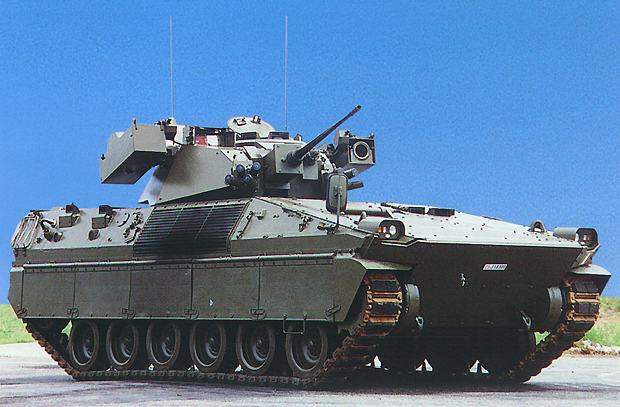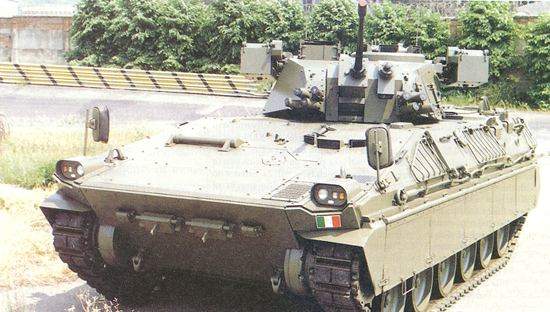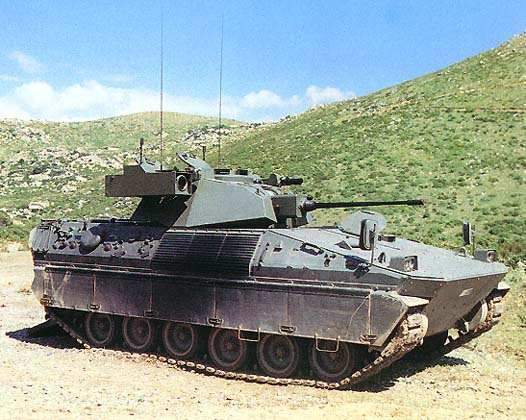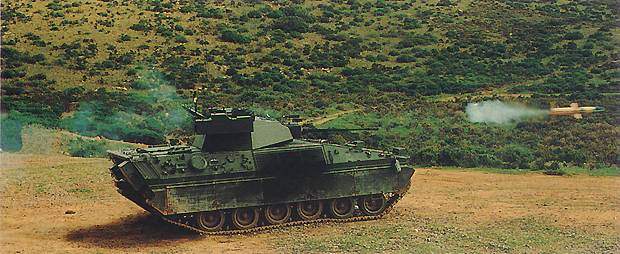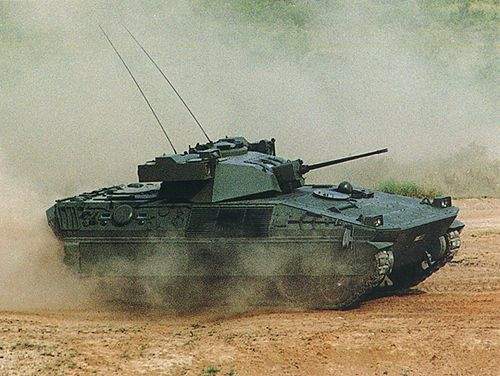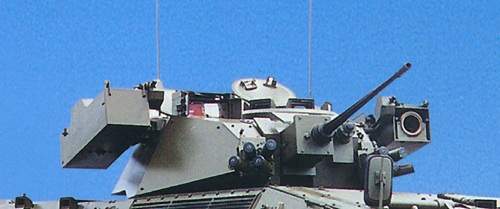
The Dardo Hitfist tracked infantry fighting vehicle
The Dardo Hitfist infantry fighting vehicle, in production for the Italian Army, is designed and manufactured by the Iveco Fiat Oto Melara Syndicated Company based in Rome. The tracked vehicle has a 25mm gun turret, but can also be fitted with a 30mm or 60mm gun turret. It is intended to be the basic model of a family of vehicles to include 120mm mortar carrier, command (C3I) vehicle, ambulance and light tank with 105mm gun turret.
The first production order for 200 vehicles for the Italian Army was placed in 1998 and the first was delivered in May 2002. Deliveries were completed in 2005. Total requirement was expected to be 500 vehicles, but further acquisition has been postponed under the 2005 Italian defence budget.
Dardo vehicles were deployed in support of Operation Iraq Freedom in 2004. In May 2007, the Italian government announced that eight Dardo vehicles were being sent to Afghanistan to support Italian troops with the NATO International Security Assistance Force (ISAF) peacekeeping mission.
The weight of the Dardo in combat order is 23t and the vehicle carries a crew of nine – driver, commander, gunner and six troops.
Dardo armament
The Dardo’s main weapon is the 25mm Oerlikon KBA automatic stabilised cannon which has a rate of fire of 600 rounds a minute. 200 rounds of ammunition are carried in the turret ready to fire. Two 7.62mm machine guns are installed on the turret, one co-axial with the main gun.
Two TOW anti-tank guided weapon launchers are installed, one on each side of the turret. The TOW missile, supplied by Raytheon Missile Systems Company, is a wire-guided, optically tracked missile with a maximum range of 3.75km. The fire control for the TOW missiles is integrated into the vehicle’s fire control system.
Self-protection
The hull is of all-welded aluminium alloy with add-on steel armour plates for increased protection. The vehicle has a very low profile, with height of 2.64m to the top of the turret, which decreases the radar and visual signature of the vehicle for enhanced survivability.
Smoke grenade launchers, with four 80mm barrels per side, are installed on the front of the turret on either side of the main gun in the forward pointing direction. The crew compartment has five rifle ports, two on each side plus one in the rear ramp, for close defence.
Fire control and observation
The Dardo is equipped with an Galileo Avionica (formerly Officine Galileo) Hitfist integrated fire control system, which incorporates automatic measurement of target range and relative speed. The commander has six episcope sights providing 360°, unity magnification, direct view. The cupola can also be fitted with panoramic stabilised sight.
The Dardo for the Italian Army will have the Day/Night Range Sight (DNRS) from Kollsman, Inc. of Merrimack, New Hampshire. DNRS is a stabilised gunner’s sight with eyesafe laser range finder and thermal imager. The commander’s station is equipped with a monitor displaying the view from the gunner’s night vision system. The electrical servo drives are digitally controlled.
Propulsion
The power pack, consisting of the engine and transmission system, is configured for ease of maintenance and are quickly and easily replaced in the field. The 6V, 382kW, (1,865Nm) engine supplied by Iveco is one of a modular range of turbo-charged, after cooled diesel engines specially designed for armoured fighting vehicles. The automatic transmission is built under licence from ZF, with four forward and two reverse gears, and incorporates the steering system and the hydraulic retarder. The final drives are epicyclic.
The running gear consists of six dual rubber lined road wheels, with three return rollers on each side and connector type tracks. The suspension system consists of a torsion bar, bumper and hydraulic shock absorber on each suspension arm.
There are disc-type brakes, on each of the final drives, integrated by the transmission retarder. The steering gear consists of one stepless range of radii per gear plus the pivot.
The maximum speed of the Dardo is more than 70km/h. The vehicle can manoeuvre on gradients of more than 60%. The fording depth is 1.5m without preparation.

